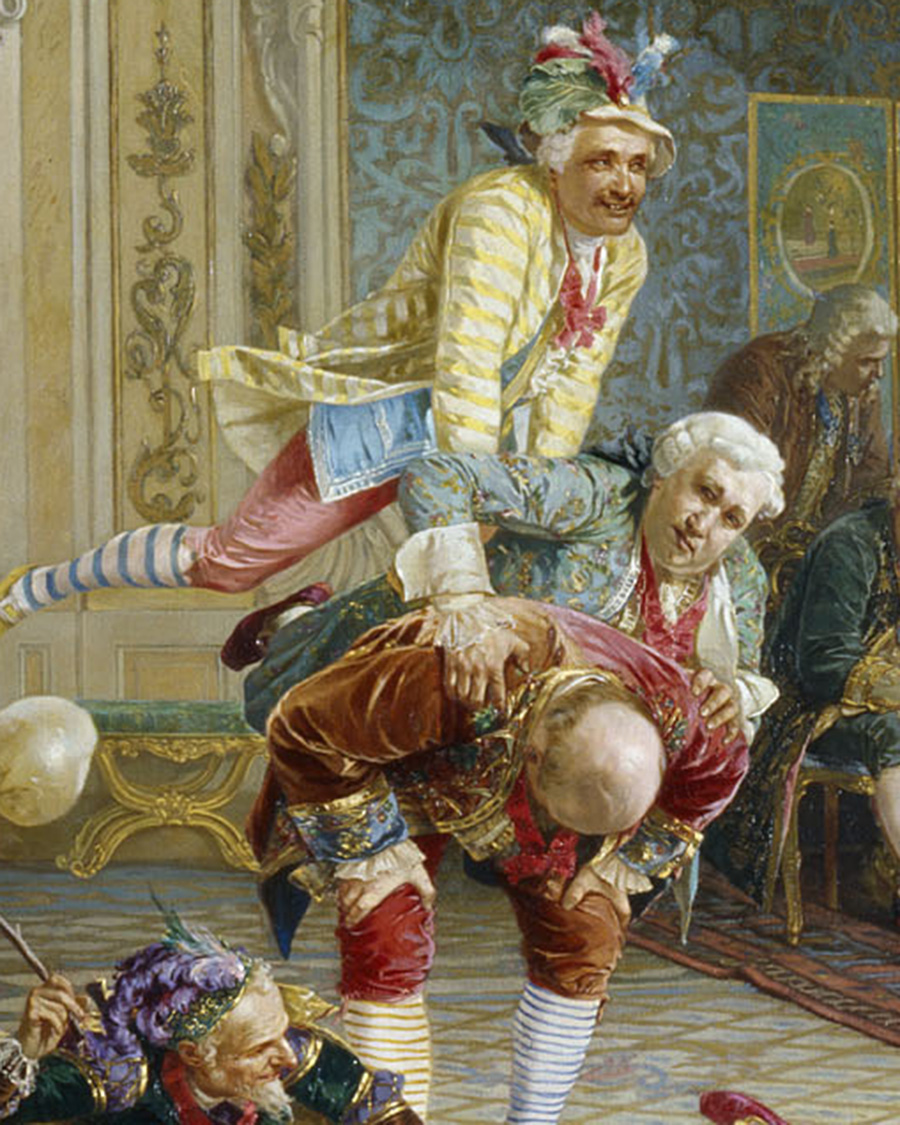What’s going on in the painting ‘Jesters at the Court of Anna Ioannovna’ by Valery Jacobi?
Jester as a profession
Jesters at the court of Russian tsars have been around since ancient times. This was not an easy job – it was necessary to balance between fun and the danger of instantly falling into disfavor for speaking too truthfully. And it was not always just common people who became jesters or “fools”, as they were dubbed. There were also representatives of nobility among them. For example, Ivan the Terrible had Prince Gvozdev of Rostov, nicknamed ‘Osip Gvozd’, as a jester. The tradition of keeping jesters at court stopped only after Catherine II.
At the European level

Under Empress Anna Ioannovna, life at court turned into a “heavy luxury”. It amazed with its pomp and wastefulness – everything had to be no worse than in Europe. Italian opera and ballet, a German theater troupe and several orchestras would perform at court. Various balls, masquerades and other festivities would be organized for the empress.
She also loved jesters. She could spend the whole day in her bedroom surrounded by them. It is this moment that is depicted in the painting ‘Jesters at the Court of Anna Ioannovna’ by artist Valery Yakobi.

There are no random people in it: All 26 characters in the painting are easily recognizable. The empress herself is lying sick on the bed and is being treated by a proven remedy – entertainment.

In the chair at the head of the bed sits Ernst Johann Biron, Anna Ioannovna's favorite. Behind his shoulder is Count Andrei Ushakov, head of the secret chancellery. Next to Biron sits Grand Duchess Anna Leopoldovna, who, after the death of the empress, would become regent for her son Ivan VI.

Standing behind the card table, Count Burkhard Minich and Prince Nikita Trubetskoy are whispering about something. Cabinet Minister Artemy Volynsky is frozen at the entrance to the bedroom – he clearly does not approve of the sight that has unfolded before him.
Jesters for Every Day
But, the main characters of the picture are, of course, the jesters.

There are seven of them, each with their own story. The jester Pedrillo is playing the violin – Italian Pietro Mira was one of the empress' favorites and entertained her by playing musical instruments and playing cards with her.
In the center of the room, the company has started a jumping game – Prince Mikhail Golitsyn stands bent over. As punishment for marrying a Catholic, Anna Ioannovna made him a jester and ordered him to serve her kvass (a soft drink based on rye bread), for which he was nicknamed ‘Kvasnik’. Prince Nikita Volkonsky, meanwhile, is jumping on him.

His wife Agraphena was accused of intrigue at court and sent into exile. And he himself was made a jester and told to look after Anna Ioannovna's miniature Italian leurette – a few years later, he would go mad and die.
In a yellow striped camisole and a hat with feathers, jester Balakirev is jumping above everyone – he served Peter the Great and his wife and became a jester under Anna Ioannovna. On the floor in front of this company lies Count Alexei Apraksin – he was promoted to jester for his conversion from Orthodoxy to Catholicism. Next to him, holding a whip with a bladder on the end, is d'Acosta – like Balakirev, he served under Peter the Great and spoke six languages perfectly. Finally, a Kalmyk girl named Avdotya Buzheninova is sitting on a bear skin by the empress' bed in a colorful outfit.

